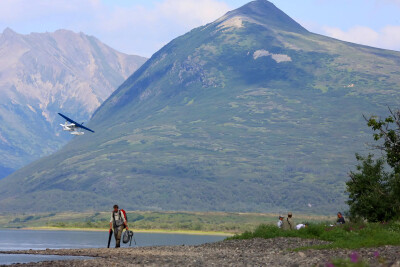WOODS HOLE — Yogesh Girdhar wowed the room with a video of what looked like a small shoebox awkwardly paddling underwater.
What Girdhar, a post-doctoral scholar at Woods Hole Oceanographic Institution, called a “curious robot” had none of the cachet of the sleek autonomously operated torpedoes, high-tech miniaturized laboratories, or parasite-zapping lasers that had already been displayed at a conference held Monday at the institution’s Quissett Campus to explore the role of robots and automation in aquaculture.
But his clumsy looking creation filled a need in the minds of many at the conference. As it paddled along, its software played the favorite childhood learning game — one of these things is not like the others — picking out a small coral head sticking up from the sand and zeroing in on it. The program, Girdhar said, would help a free-swimming vehicle, patrolling inside a fish cage far out to sea, recognize and investigate anomalies such as dead fish, a hole in the net, even evidence of disease. It could then notify its owners that something was wrong, prompting additional investigation.
It's the kind of innovation conference organizers hope will make offshore aquaculture more cost effective.
“Open-ocean aquaculture is a high-cost way of producing fish that hasn’t really taken hold yet,” said Hauke Kite-Powell, a WHOI researcher in marine policy. “The challenge is to make it cost-competitive with near-shore aquaculture.”
Read the full story at Cape Cod Times >>
Read more about ocean aquaculture >>






